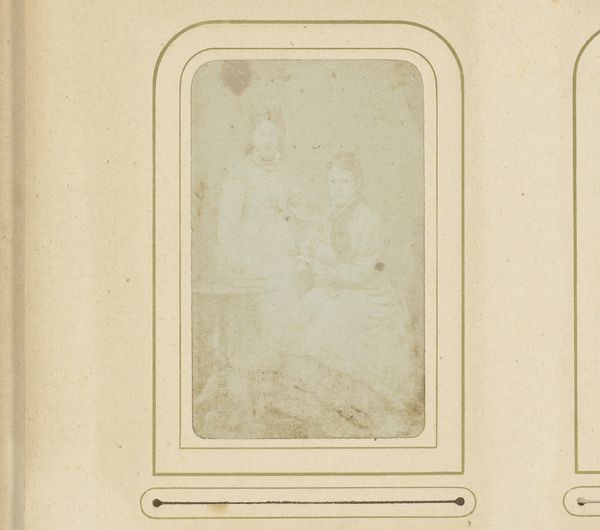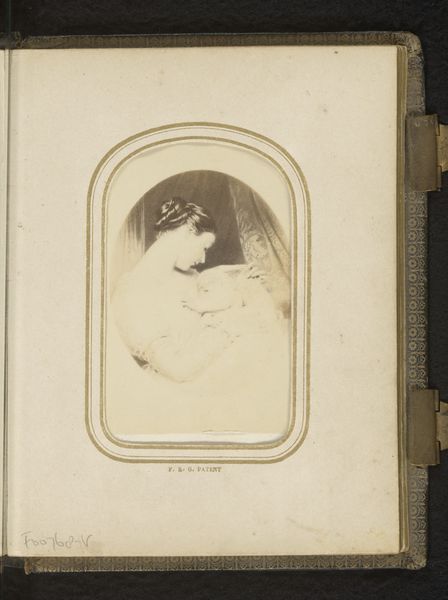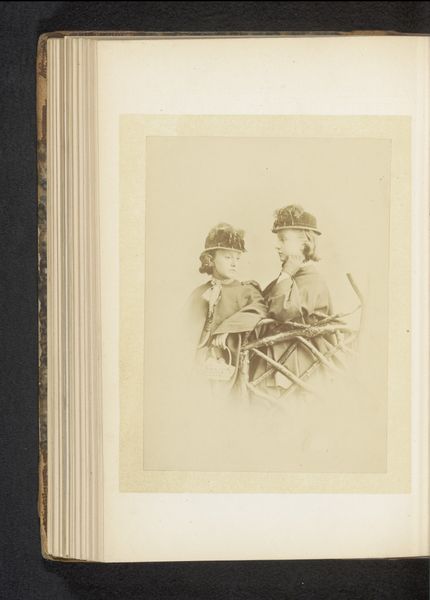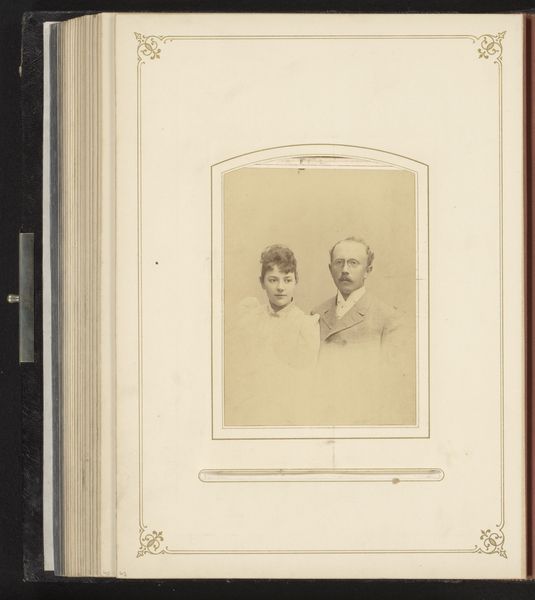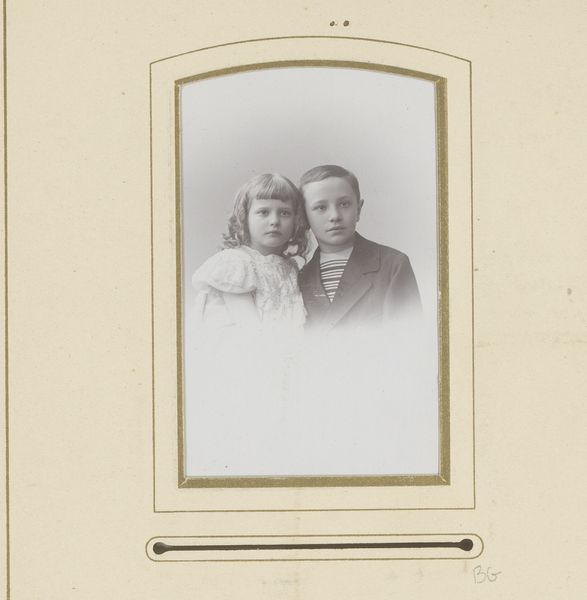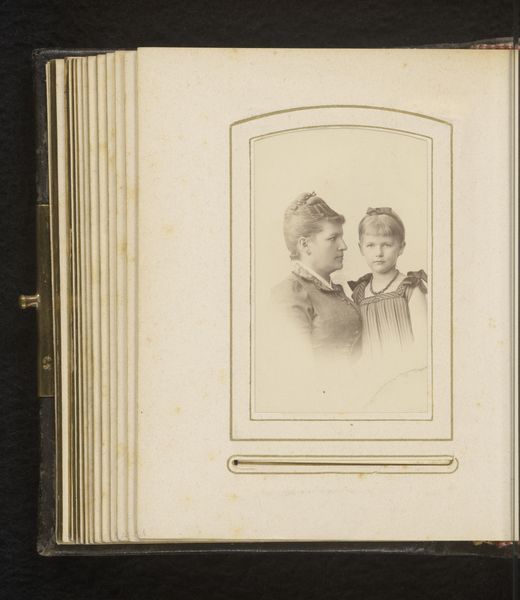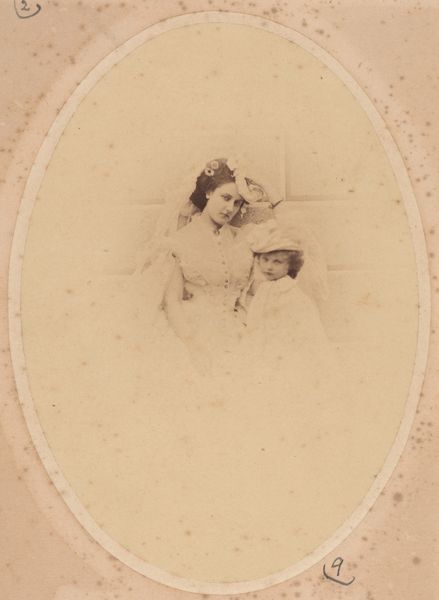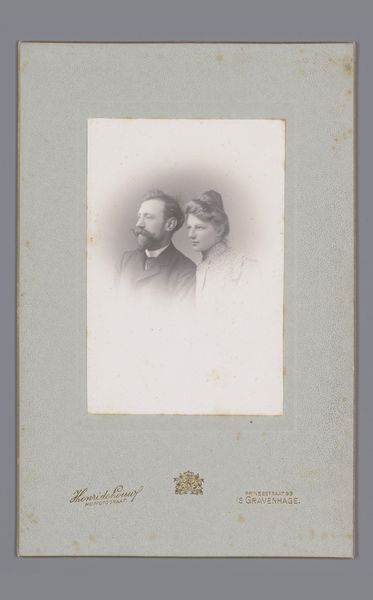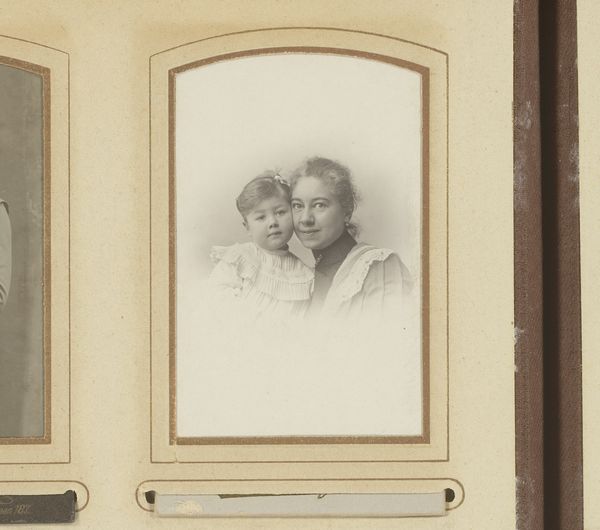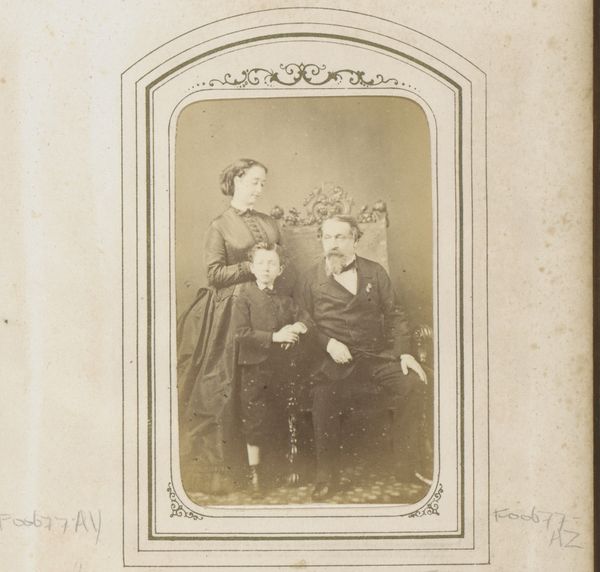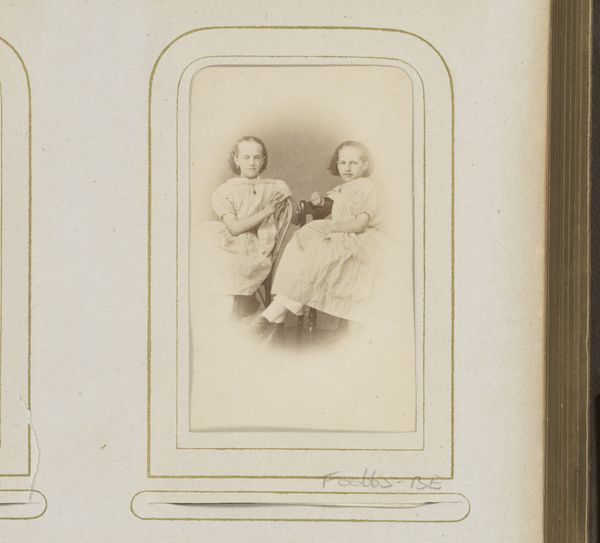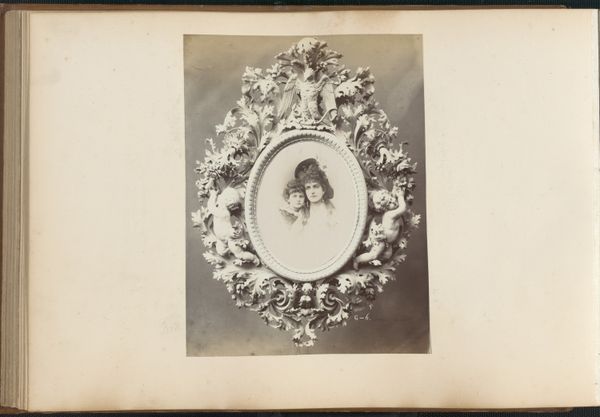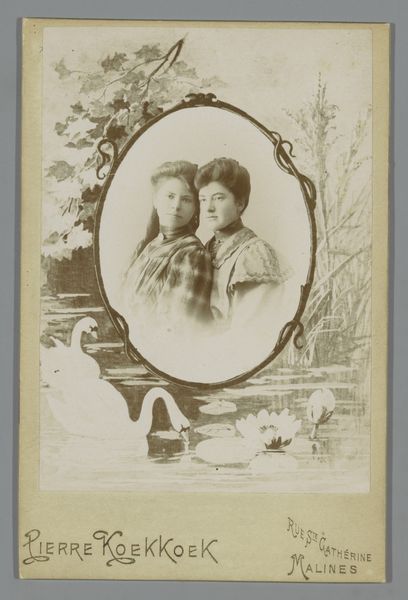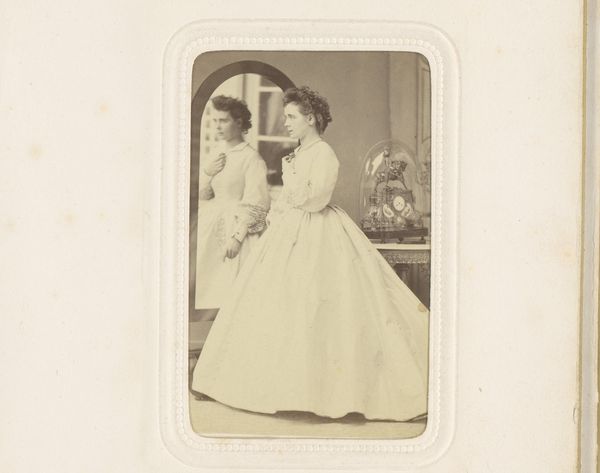
photography
#
portrait
#
photography
#
realism
Dimensions: height 166 mm, width 105 mm
Copyright: Rijks Museum: Open Domain
Editor: This is "Portrait of Princess Wilhelmina and Queen Regent Emma," a photograph from 1894 by M.M. Couvée. It's a lovely, formally posed shot. What strikes me, besides the clear royal status, is how tactile and textured everything seems, especially considering it’s a photograph. What do you see in this piece? Curator: Beyond its straightforward function as a royal portrait, I see a fascinating glimpse into the material culture and labor practices of the time. Photography was rapidly becoming democratized, but a portrait like this was still a constructed luxury, involving the photographer's skill and specific chemical processes on glass plates and specialized papers. Consider the clothes: who made them, from which materials? The hats-- the layers and process they contain are remarkable, and what about the photo production materials? Editor: That’s interesting, the thought of it as constructed, rather than captured. It does make me wonder about the labor involved. Curator: Exactly! The studio backdrop, the lighting, the photographer’s choice of pose, even the ornate mounting – all point to a carefully orchestrated performance of power and status made possible through extensive, often invisible, labor. And how was that photograph received? Where and how would it have been displayed and circulated? Those questions can tell us about consumption and distribution as much as the photograph's physical being. Editor: So, it’s not just a picture of royalty, it's a product of its time reflecting a whole chain of production. It makes me think about the environmental cost of image making, then and now. Curator: Precisely. It pushes us to acknowledge the social, economic and industrial infrastructure embedded in the seemingly simple act of taking a picture. Next time we pick up our phones, we may reconsider the processes that enable that act. Editor: This has completely shifted my perspective on this image. I was focused on the subjects, but now I’m considering the hands that shaped it. Thank you.
Comments
No comments
Be the first to comment and join the conversation on the ultimate creative platform.
